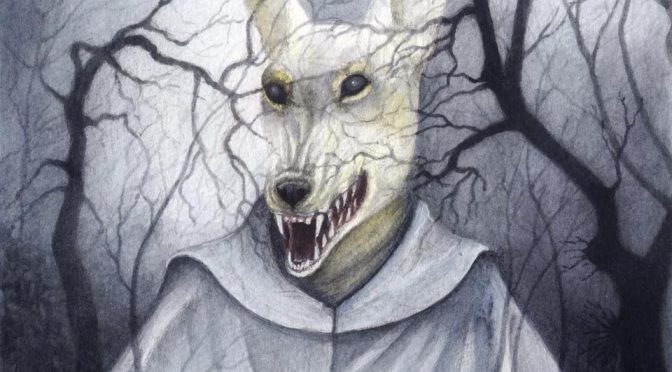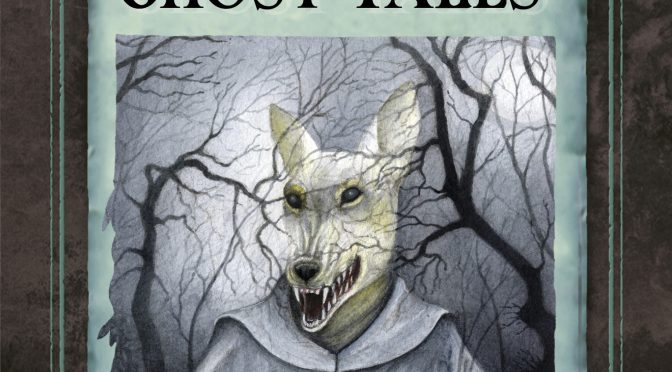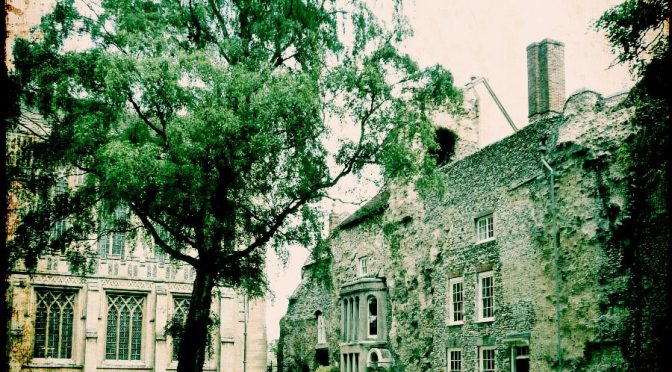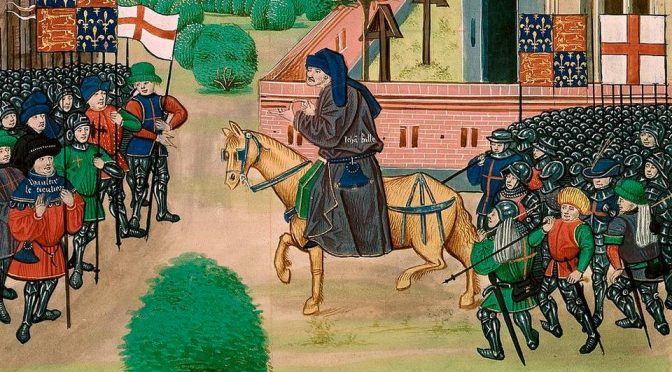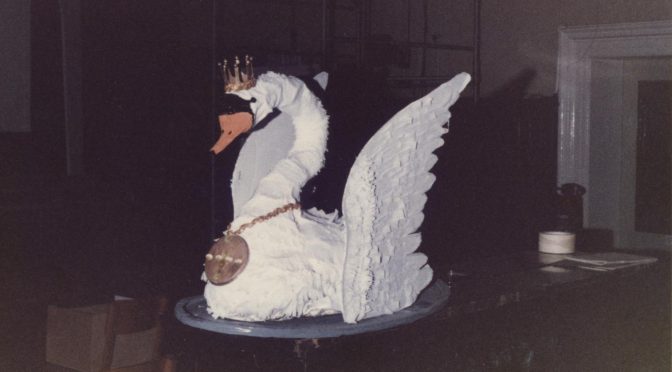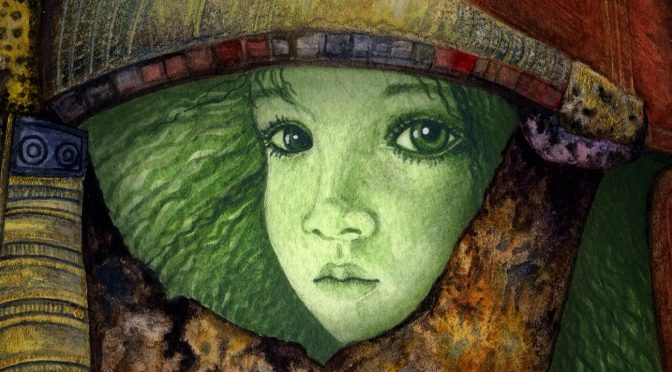Lovely new write up for Suffolk Ghost Tales, with an interview Cherry and I did with Sheena Grant of the East Anglian Daily Times:
Tag Archives: Suffolk
The Treasure Seekers: finding (or not) gold and wealth in local folklore
If there’s one trope of folklore that appears over and over again, it’s schemes to get rich quick. Jack and the Beanstalk is, of course, one of the most universal – who wouldn’t want a goose that laid golden eggs? Lazy but often kind boys charm princesses into marrying them; pretty and resourceful maids do the same with princes. These fairy tales are a daydream, a wish-fulfilment to those stuck in a seemingly inescapable round of poverty and want. It’s something we can easily recognise in lottery ticket buying and the poring over the lives of celebrities and the royals even as austerity pinches pockets a little further and privatisation erodes the services we once had. But get rich quick stories didn’t always take place in the never-never land of fairy tales. Sometimes they take place right here, in our local area.
In researching the various folk and ghost tale books I’ve written, these tales occur again and again. They are not, of course, tales in which people actually get rich quick. These are the other sort – the sort that tells us not to rock the boat, not to disturb the status quo, to knuckle down and work hard to get your rewards because these schemes always end, if not in disaster, then in disappointment.
You see, there’s treasure hidden out there, under the earth, in ponds, in secret places. We all know it’s true – look at Lance and Andy in Detectorists sweeping their metal detectors over the (allegedly) Essex countryside (actually Suffolk!) and, at the series’ end, discovering the treasure lurking beneath their feet. People have been discovering this hidden treasure for centuries – Roman coin hoards, lost rings, real buried treasure placed with the pagan dead. Even now, we are desperate to concoct tales to tell the story of why this treasure happened to be where it was, even if our tales today tend to be more historically minded than the tales told in ale houses and by firesides in the day’s before we knew the history in the earth. But still, stories they are.

That’s why it’s thrilling to think that the man in Mound 1 at Sutton Hoo might actually be King Raedwald. A real person, attested by that reliable witness, Bede – and in king lists. We already have a story to attach to him. But there is a tale that Edith May Pretty, who owned the estate that the burial ground sits on back in the 1930s, had a friend who saw ghosts there – including one who stood on Mound 1, which, so it’s said, inspired Pretty to get the archaeologists in, just before the Secord World War![i] Of course, there may have long been tales that the burial mounds were haunted – after all, most of them had been ransacked for the treasure that the robbers had failed to find in Mound 1.
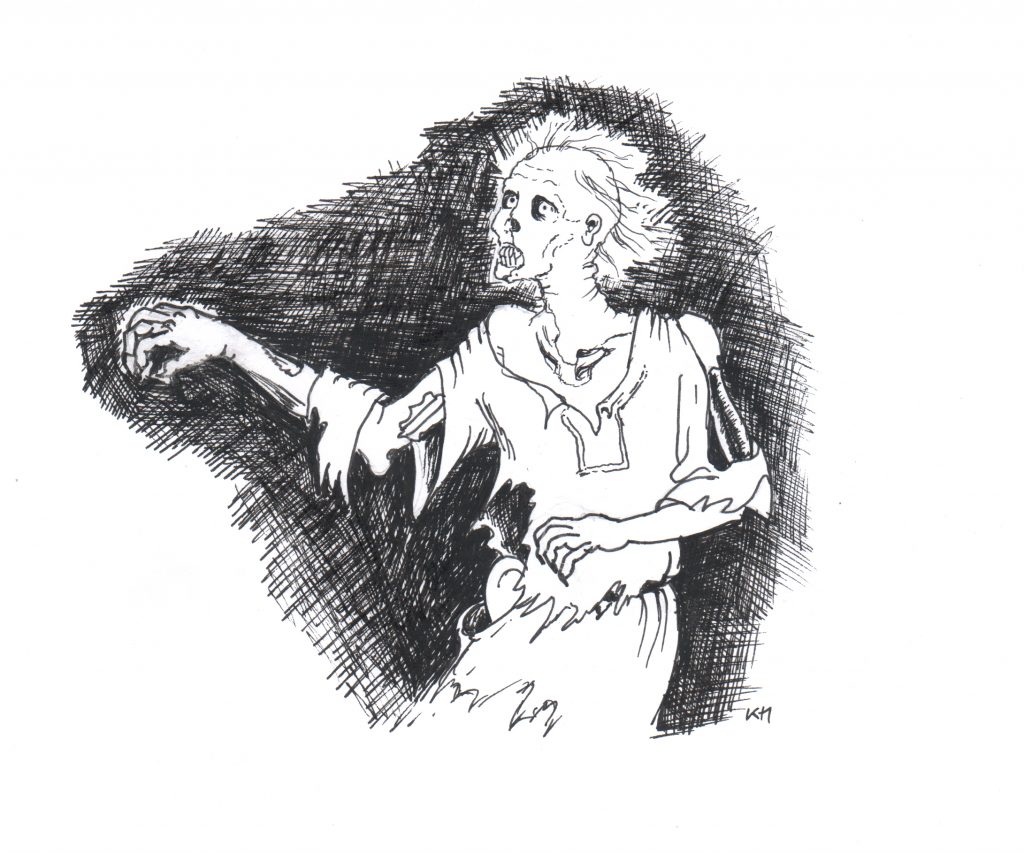
Not surprisingly, burial mounds are often a focus of treasure seeking tales. Not just Anglo Saxon and Bronze Ages ones, potentially likely to hold treasure, but the far older long barrows, which were repositories for bones, not the metal whose use had not yet been discovered by the people who raised them. As I’ve said before, often all these mounds were thought to be Saxon or Viking, so Molly the Dreamer of Minchinhampton can meet a Saxon warrior under Gatcombe Tump long barrow on his dreamed tip off that there’s gold buried there, as retold in Gloucestershire Ghost Tales. But that’s only one example – there’s a Bronze Age round barrow near Bisley, also in Gloucestershire, that’s actually called Money Tump! The tale there, retold by Westwood and Simpson, is that it was well-known that there was treasure there – a farmer wished to bulldoze the mound to find it, saying he’d ‘be rich for the rest of his life.’ [ii] The money came from the chieftain buried there after, presumably, being cut down fleeing the invading Saxons. There have been sightings of headless warriors there, too, though admittedly this was after the Bisley Feast…[iii] There’s a Golden Coffin Field up there, too, at Oakridge, with a tale that the field once contained such a thing – there’s a barrow in the field.[iv]

In Wiltshire there’s a golden coffin, too, but with a darker tale attached to it. It’s associated with one of the barrows on the Down at Bowerchalke, near Salisbury. I tell the tale in Wiltshire Folk Tales, and there are usual admonitions of not speaking while raising the coffin – but of course one of the seekers does, and the seven men who went up the hill to dig up the coffin never came down, but rather roam the hill, dragging the coffin behind them – its theirs for eternity, but not in this life! A tale told to put you off, to deter you from going up the hill and trying your luck! Treasure sits under megaliths, too – such as in Somerset under the wandering Wimblestone[v] – if you can get your hand under there while it’s dancing around the field at full moon and Midsummer’s Eve, or rolling down to meet the nearby Water Stone… What won’t work is yoking horses to it to move it during the day – the Wimblestone mocks you by staying put, then mocks you all the more by telling the tale to the Water Stone when next they meet!
It isn’t just mounds and stones were treasure can be found, back in Suffolk again we find our poster boy, who graces the cover of Suffolk Ghost Tales – the Dog-headed monk (and his nearby fellow, the Monk-headed dog), who is the ultimate odd couple – a monk and dog set to guard a treasure by St Felix, the bringer of Christianity to Suffolk at one of Suffolk’s many Clopton’s that have strangely morphed over the centuries into one being… These creatures are by halls – places of the wealthy, where you might logically think there would be treasure to be found.
Pools are another likely location – makes sense, we love putting treasure in water, a relict of a time in the Bronze Age when we offered sacrificial weapons to the spirits, maybe, of the water, and seen in every penny dropped into fountains around the world to ensure a wish come true or a return visit. At Wimbrell Pond near Long Melford is a sorrowful husk of a ghost who clings to its treasure, calling out, ‘that’s mine,’ when people try to retrieve it – although the pond may be long gone now, and the treasure forgotten. It’s said that there was a major Roman vs Celt battle there, on the Roman road to Coddenham, and that maybe the ghost has been there since then.[vi]
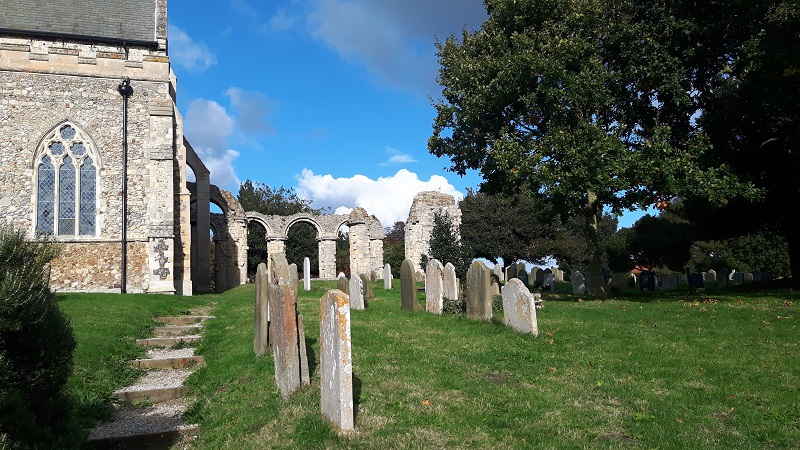
Even if you get the treasure in your hands of a night it will be gone by morning – as evinced by the case of the old lady of Orford who was buried with her gold and sent out of her grave to try to give it away as a punishment for trying to hang onto it when we all knew that, despite what the ancients might have thought, you can’t take it with you. But ghostly gold only exposes the gullibility and avariousness of those who seek it…
What can we draw from all these tales, and the many, many more that I could mention? I don’t know, but I do wonder whether if our society was more equal and wealth distributed so that we were more comfortable, whether we would dream of free wealth in this way and go to the great efforts our folkloric cousins go to get the free thing? Hmm. Back to Lance and Andy again. Much treasure dug up now does go into museums for all of us to see, but what drives the people who seek for it? Are they content with finding the fragments of the past for the thrill of meeting the ancestors? Many are. But – you do get paid the worth of treasure if you find it – divided between the finder and the landowner. And that is a driver as well. And, all of us, we know the excitement of finding a pound coin (not so much a penny, these days, for all the luck it might bring) or more dropped by another…
Images:
1. Cover image for Suffolk Ghost Tales (c) Katherine Soutar-Caddick
2. Sutton Hoo in the snow (c) Kirsty Hartsiotis
3. Wolfhang from Molly the Dreamer (c) Kirsty Hartsiotis
4. The Barrow Thieves (c) Kirsty Hartsiotis
5. Orford churchyard – where the old lady is said to be buried (c) Kirsty Hartsiotis
Notes:
[i] https://www.youtube.com/watch?v=tUG2LqqsEek
[ii] Westwood, J & Simpson, J The Lore of the Land (Penguin Books, 2005), p. 283
[iii] Rhiannon http://www.themodernantiquarian.com/site/4614/money_tump.html
[iv] Grinsell, L V The Ancient Burial Mounds of England (Routledge, 2015), p. 68
[v] Grinsell, L V Folklore of Prehistoric Sites in Britain (David & Charles, 1976), p. 58 & 104
[vi] Burgess, Mike Hidden East Anglia, https://www.hiddenea.com/suffolka.htm#acton
Suffolk Ghost Tales for the Dark Nights of Winter
Have a look at this new blog I’ve written for The History Press in advance of Suffolk Ghost Tales coming out on the 13 December about Suffolk’s ghost tales, Suffolk’s most famous ghost story writer, M R James and the tradition of telling ghost stories at Christmas…
‘All places have ghost stories. Laurie Lee, in Cider with Rosie, says, ‘There were ghosts in the stones, in the trees, and the walls, and every field and hill had several.’ He’s talking about Gloucestershire, but, even now, a hundred years on from when Lee was a boy, it still holds true across the country. But of all counties, Suffolk is a little bit special when it comes to ghosts…
The low cliffs, pebble beaches and faded hotels of his home county have become fixed in our minds as subtly dangerous places with a hint of folk horror. All those lost places… Visit Dunwich to see the last grave of All Saints teetering on the edge of the cliff, visit Aldeburgh and see the House in the Clouds bright and distant across the marshes, go to lonely Minsmere and see the ruined chapel, all that remains of a monastery and village abandoned, go to Covehithe … if it’s still there.
Suffolk is, after all, the home county of one of the greatest tellers of ghost tales – M R James. James moved to Suffolk aged three, when his father became rector of Great Livermere, up near the Norfolk border. His family lived there from 1865 until 1909, so James had a foot in Suffolk for much of his life. Several of his tales, ‘Oh, Whistle and I’ll Come to You, my Lad’, ‘A Warning to the Curious’, ‘The Ash-tree’ and more, are set in Suffolk, and develop the disquieting aesthetic we now recognise in the landscape.’
Read the rest of the article here:
https://www.thehistorypress.co.uk/articles/suffolk-ghost-tales/
The Secret Disclosed: ghostly riots in Bury St Edmunds
I’m all about ghosts at the moment, what with Suffolk Ghost Tales coming out next week. But this blog is a bit naughty, as it’s actually inspired by the background to a story in my previous Suffolk book, Suffolk Folk Tales. The question is, how do ghosts come to be? You’d think that it would be by someone dying and proceeding to haunt a place, wouldn’t you? But that’s not always the case … sometimes they are conjured up out of the collective mind of the people, and such is the case for the Grey Lady of Bury St Edmunds in Suffolk.
Once upon a time there was a woman by the name of Margaretta Greene. She was a scion of the Greene family of Bury, best known, perhaps, for the brewers Greene King. She lived in a very strange building indeed, a building that had once been part of the vast west front of St Edmund’s Abbey, but was – and is – now houses. So vast was the abbey that just one side of the west front contains these houses, organically emerging out the rubble stone that lay beneath the dressed that was all taken away to build other parts of Bury after the monastery was dissolved in 1539. The Marquis of Bristol, who owned the abbey land from 1806, had the west front converted into houses, as well as beginning the Abbey Gardens we know today. They were nearly destroyed in the 1950s, but fortunately are still with us today.
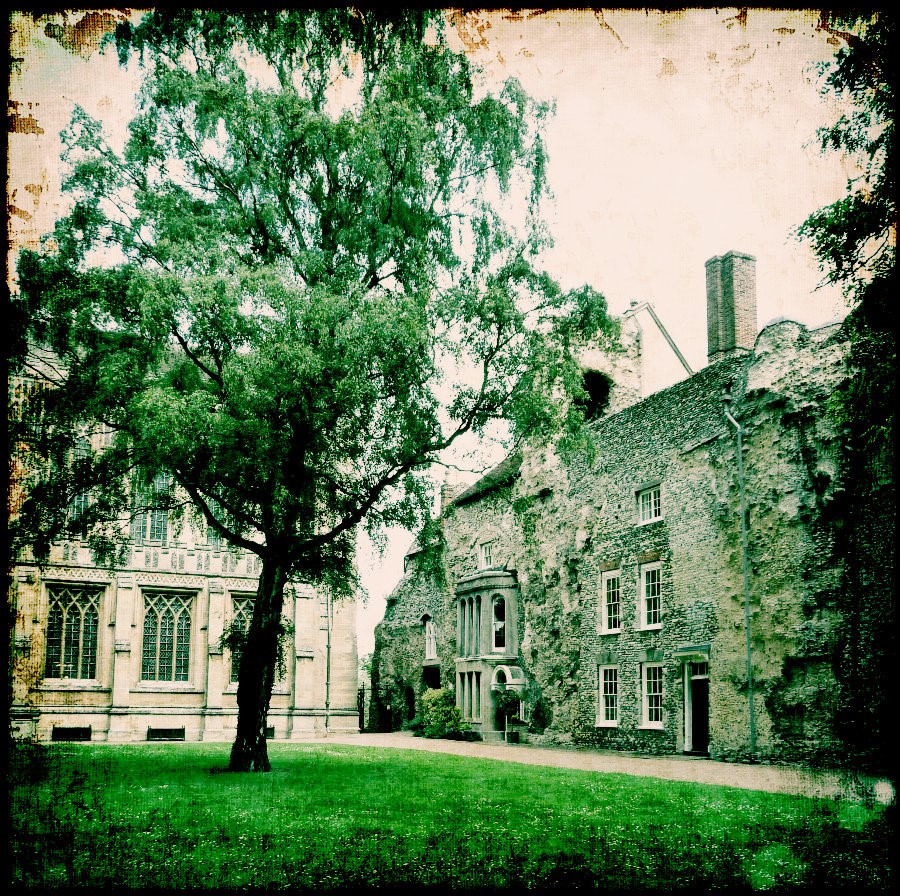
These houses lie close to the Great Churchyard between the abbey and St Mary’s, and it’s easy to imagine the affect this setting might have on a Romantic young woman… In 1861 she privately published a slender volume entitled The Secret Disclosed: A Legend of St Edmund’s Abbey ‘by an Inmate’ telling a sorrowful tale of unrequited love, royal conspiracies, murder, poison, and death in the secret tunnels that were said to lie under the town connecting its religious buildings. The protagonist of this tale, young nun Maude Carew and Queen Margaret of Anjou, the definite baddie in this melodrama, she said, haunted the Churchyard every 24 February at precisely 11pm.
The people of Bury fell for it hook, line and sinker. Well, why wouldn’t they? Margaretta had said that she’d heard footsteps in her house, which had led her to find a casket containing the manuscript which she had simply transcribed … well, it had to be true, didn’t it?
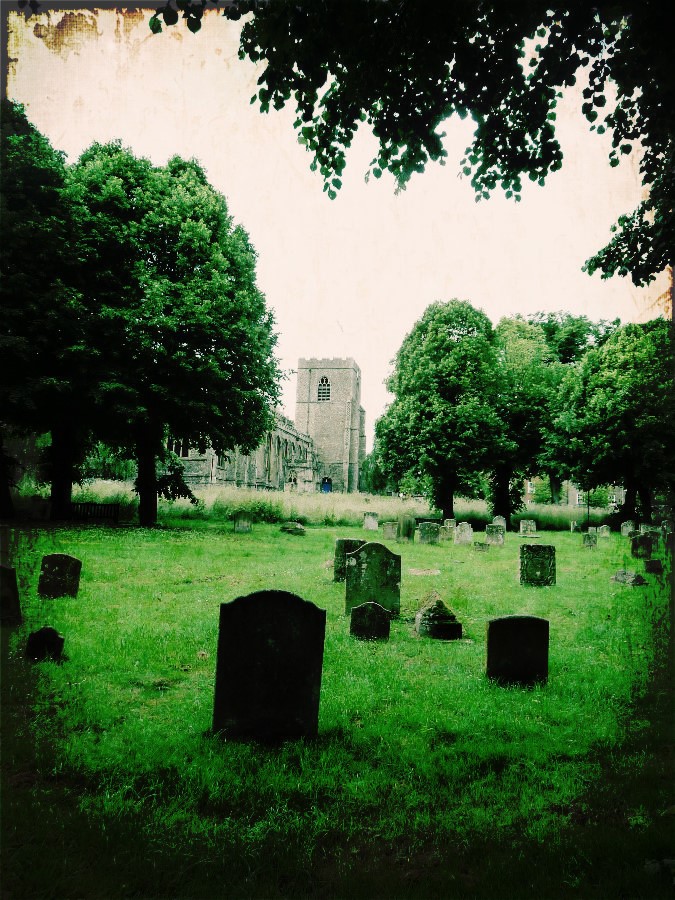
The next 24 February, 1862, a horde of folk gathered in the Churchyard to see the ghosts. Did people really expect to see a ghost? It seems so, as by the time 11pm approached, the crowd was so excited as to be almost hysterical. And when, inevitably, the ghost didn’t appear? Well, some said that it did – but no one could agree on what the ghosts looked like. Were they white? Were they black? The mood turned ugly as the crowd realised they’d been duped. All hell broke loose, the ghost watchers rioted – and indeed a window was broken in Greene’s house.
And yet, Maude Carew, despite being a fictional character, lived on as a ghost in Bury. She became the Grey Lady of Bury, taking over the personalities of other Grey Ladies in the town and roving way beyond her proper haunting ground of the west front and churchyard. Can she possibly be the female ghost who is said to haunt Cupola House in the Traverse, along with the object of her desire, Father Bernard – aka the brown monk? More realistically, a Grey Lady, dressed in the robes of a nun, is said to haunt the Fornham Road area, including St Saviour’s hospital. Now, this isn’t unreasonable, if the story Greene was true, as it was at St Saviour’s hospital that the unfortunate victim in the story, Humphrey, Duke of Gloucester, died that 24 February 1447.
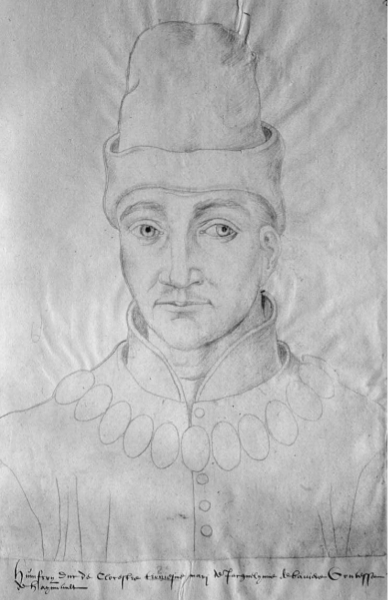
Yes, the tale does have a historic background – one familiar to both students of history and students of literature, as his tale is immortalised in Shakespeare’s Henry VI, Part II. Humphrey, Duke of Gloucester was Henry VI’s uncle, and was Lord Protector, and, after 1435, was heir to the throne. In 1441 his wife, Eleanor, was arrested on a charge of witchcraft, for, with ‘the Witch of Eye’ (no, not the Suffolk Eye, ‘Eye next Westminster’) Margery Jourdemayne, it was prophesised that Henry VI would die that year. Of course, he did not, and this was the end of Humphrey’s career – and Eleanor and Margery’s lives. He was summoned to a parliament at Bury in 1447. There was a rumour Humphrey was poisoned, but he might also have had a stroke, as he lay unconscious for three days after a banquet. If he was poisoned, it’s just as likely that it was by the Earl of Suffolk, William de la Pole, as it was thought that Suffolk’s enemies might rally to Gloucester… And that is what was whispered during Cade’s rebellion in 1450 that saw Suffolk fall from grace, although there is no evidence that he was poisoned. Dark, complicated times – I think we can identify with them!
This story has been taken from Haunted Bury St Edmunds by Alan Murdie (Tempus, 2006). Murdie is a great expert on Bury’s ghosts – and is also the Chairman of the Ghost Club. I fell in love with the tale when I first read it, researching Suffolk Folk Tales back in 2012, and think it sad that A Secret Disclosed isn’t available … anywhere! Not even on archive.org. There is a copy in the Record Office in Ipswich – but what other copies exist? It would be a shame for the ghost to live on, but the original story to die…
Images:
The images of the churchyard and west front are copyright Kirsty Hartsiotis, 2017
Copyright info for the image of Humphrey, Duke of Gloucester can be found here.
Suffolk Ghost Tales – out very soon!
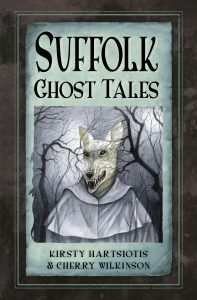 Very exciting news! My new book is out in just a few weeks on the 13 December – Suffolk Ghost Tales, part of The History Press’s ghost tales series. This time, it’s been a really special collaboration – with my mother, Cherry Wilkinson.
Very exciting news! My new book is out in just a few weeks on the 13 December – Suffolk Ghost Tales, part of The History Press’s ghost tales series. This time, it’s been a really special collaboration – with my mother, Cherry Wilkinson.
Here’s the blurb:
SUFFOLK – a peaceful, rural county with big skies, rolling fields, unspoilt beaches, quaint towns and villages. But all is not as quiet as it seems. Could that be the eerie clanking of gibbet chains at the crossroads? Did you see a desolate face at an upper window or a spectral white form lurking in the hedgerow? Cats are not always lucky – and beware a north Suffolk Broad in the still, small hours of Midsummer Night . . .
Kirsty Hartsiotis and Cherry Wilkinson retell, with spine-chilling freshness, thirty fabulous ghost tales from all corners of this beguiling county. So pull up a chair, stoke the fire and prepare to see its gentle landscape in a new light.
Cherry and I moved to Suffolk when I was two, living first near Hadleigh, later in Bury (and a couple of stints over the border in Norfolk, shh). I left, but Cherry still lives in the county, near the coast. Her association goes back long before I was born: her great-aunts who lived in the house next to Lindsey’s little chapel, and through school at St Felix, Southwold and holidays at Sizewell before the power station changed everything… We had a chance to dig more deeply into Suffolk’s heritage a few years ago when I wrote Suffolk Folk Tales (The History Press, 2013).
But there were many places we realised we’d never seen – well, this book has gone a long way to rectifying that. It’s been quite a ride, discovering these wonderful, spooky – often sad, sometimes hair-raising! – stories and working together to create the tales we’ve told. Some you might know well – there’s the story of Toby, the black drummer, and the sad tale of the Lowestoft witches. We’ve travelled all over the county visiting the locations of the tales, talking to the current owners of buildings, and discovering some new stories from people we know.
Suffolk is the ghost county – childhood home of M R James, and the setting for some of his scariest tales. Katherine Soutar‘s wonderful cover illustration hooks into that unheimlich world on the edge of our own… Our tales tread a point somewhere between storytellers’ local legends and the literary ghost story. We hope you will share these stories, too, and keep the tales of the dead alive.
We’re celebrating with a launch event in Wenhaston Village Hall, near Southwold, on the 16 December 12pm. Come and hear tales and songs, and celebrate with a glass of wine!
Is John Ball a dream?
It’s a tough one, this. William Morris’s novella A Dream of John Ball paints a heroic picture of one of the most complicated and contested episodes in English history: the so-called Peasant’s Revolt of 1381. The main character, dreaming his way back to the 14th century from Morris’s dirty, depressed and over-populated London to a clean and well-kept Kentish village, discovers he has arrived at exactly the moment when John Ball, the excommunicate priest recently sprung from Maidstone jail by a growing body of rebels, arrives to preach and incite the locals to take up their weapons and march on London. The villagers are decent, happy to share what they have with the stranger, and all too glad to follow John Ball to bring down the feudal system and reinstate the primordial communism known by the first men and women, when there were no gentlemen. But was it like that?
I’ve been homing in on the Great Rising from two different directions. Firstly, this blog, and my all interest in Morris and his political messages, and secondly, from the book of Suffolk ghost tales I’m researching and writing at the moment. Suffolk was the original home of the hated Chancellor, Archbishop of Canterbury, Simon of Sudbury, and the county exploded into rebellion as Kent and Essex rebels were marching on London. These are dark tales. There’s no surprise that there are ghost stories associated with the rising. The rebellion in Suffolk, especially around Bury St Edmunds, Mildenhall and Lakenheath, was brutal, full of revenge, petty and great.
And that’s one of the problems, for me. This communist uprising with its noble aims of distributing the wealth to one and all was no such thing. Did John Ball even write his letters? The famous phrase, ‘When Adam delved and Eve span, who then was the gentleman?’ was in the common parlance. Did Wat Tyler taste power and have it go to his head? Did Jack Straw even exist? What then was going on?
Well, as with everything in life, it’s complicated. The 14th century was a tumultuous one – I remember reading when I was a teenager Barbara Tuchman’s magisterial (but now rather out of date) A Distant Mirror, which calls it a calamitous century. The Hundred Years War, the Black Death, revolt and rebellion, it was all kicking off. And yet, for many, in the latter half of the century, things had improved in southern England, at least. Much of the population had meat on their tables, wore better clothing, had the chance of better wages. The successive plagues had more than decimated the population, and so there were opportunities for those who were left. As you can imagine, landowners were not keen to face up to this. Parliament pushed through statutes that artificially suppressed pay. Not popular. Worse, the war with France wasn’t going well in the aftermath of the last illness of King Edward III and into the minority of his son, Richard II. And war was costly.
It’s a tough one, too, because I approve of taxation. Unlike Morris, whose ideas tended towards a stateless anarchism, my experience of living in the safe, peaceful society that has been Britain for the majority of my forty-plus years on this earth has led me to believe that a form of taxation that allows us to pay when we can (i.e. when we have an income) for things that we might need when we can’t – things like the our universal health care system, our free schooling, our state pensions, our welfare state, and, when I was young, for the fees and grants that allowed everyone to go to university, if they made the grade. And the peasant’s revolt is a lot about taxation, and not wanting to pay it.
But how much do you tax? And whom? There can be no doubt that a line was crossed by parliament. It was Simon of Sudbury who demanded the last and largest amount – £160,000 (a labourer was paid roughly 5p a day, just to contextualise that). Over a 3 or 4 year period a bewildering number of different taxes were laid on the country, and everyone, rich and poor alike, had to pay. There’s even an account of a sergeant at arms, John Legge, lifting girls’ skirts to see if they were old enough for sex i.e. had pubic hair, and were thus old enough to pay the tax, liable from age 15. Nice. The tax collectors turned up with bully boys, and corruption was rife. The burden of the later taxes fell hardest on the poor.

And people were already angry. Angry with successive wars, Angry with a venal church that cared little for the pastoral needs of the ordinary folk in their parishes. Angry with the continuing burden of petty rules and regulations, particularly for serfs, who were effectively owned by their landlord – they had to pay, for example, merchet, a kind of fine to get married, and owed time and produce to their lord. It must have seemed they got little in return for this bargain. More people were making their way off the land and into towns, and in the towns and villages too were itinerant preachers, ready to speak of a better way of being – as John Ball is supposed to have written, ‘Now pride reigns as prize, covetousness is held wise, lechery without shame, gluttony without blame, envy reigns with treason and sloth is in high season. God bring remedy, for now is time…’ To rise up? Yes.
But to rise as they did, looting and murdering? That’s what I find hard. There are moments of calm, such as when John Wrawe, in Suffolk, and his men, repair to an alehouse in Long Melford for a pipe of wine, and pay the landlord from their takings, Robin Hood style. But contrast that with the treatment of John de Cavendish and John de Cambridge, a king’s justice and Bury’s prior respectively. One waylaid and executed at Lakenheath, the other at Mildenhall, and their heads paraded around Bury for the amusement of the people. Then there’s the looting. Some of it reasonable – take the records and burn them, that’s a great way to start a new world order, as we are then, in theory, created as equal as we were when we were born. But much of the violence seems meaningless. It reminds me of the riots in Britain in 2011 after the trigger incident of a police killing. And again, the revengeful outpouring of hate and violence that erupted after Trump was elected. The people are angry. They will take revenge.
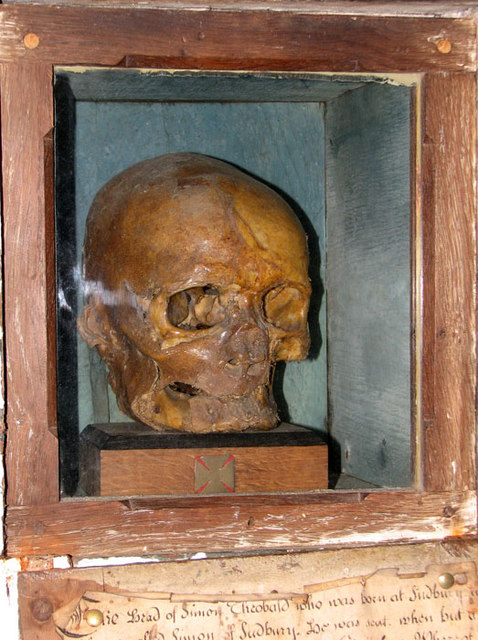
The times are more dangerous now, the stakes far higher. John Ball was a sort of left-wingish (if we can say such a thing of a medieval character!) populist. The populous were whipped into action all too easily because they had cause to be angry and had no voice. Then, the rebellion was put down hard. Nobody listened. The chroniclers vilify Ball and Tyler and the rest. They try to make people like Simon of Sudbury and John de Cambridge martyrs, and my goodness, these were not nice men they were trying to sanctify! But they were the establishment, and it had enough might to suppress pretty much anything, then. Does it today? Do we want to be able to? Do we want more surveillance? Do we want harsher laws to ‘protect’ us? No. So we mustn’t make the mistakes of the past. We must listen to those who are angry and find common ground, the common ground of our thoughts and the decency with which we all believe we are living our lives. And those who are angry need to listen, too. Need to see that revenge and violence against whoever the scapegoat might be – whether the establishment, or whether against a random ‘other’, such as the forty unfortunate Flemish clothworkers murdered during the Revolt in London – is not the way to make their own lives better.
And so, for once, if we are going to dream of John Ball, let’s make him a not rabble-rouser but a peaceable man.
Images:
- An illustration of the priest John Ball on a horse encouraging Wat Tyler’s rebels of 1381, from a c. 1470 manuscript of Jean Froissart‘s Chronicles in the British Library.
- John Ball by Bernard Fleetwood-Walker, 1938, image copyright Essex County Council
- The skull of Simon of Sudbury, copyright Evelyn Simak
New Folk Tales book featuring Three Fire Springs!
The Anthology of English Folk Tales is out today, 1 November 2016! This treasury of tales from all around England is drawn from the History Press’s county folk tales series and features tellers such as Taffy Thomas MBE, Hugh Lupton, David Phelps, the storyteller who started the History Press on this folk and ghost tale journey – and Anthony, Kevan and Kirsty from Fire Springs! We three have five tales in the book, from Gloucestershire, Oxfordshire, Northamptonshire, Wiltshire and Suffolk. And of course it has an all new cover illustration from folk tales illustrator extraordinaire, Katherine Soutar-Caddick! An ideal Christmas present for wide-ranging folk tale seekers?
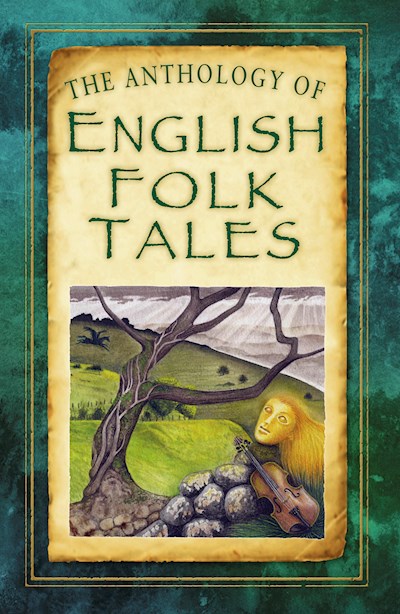
That’s not all – all SIX Fire Springs members – Chantelle, David and Richard as well as the usual suspects above are going to be featured in a new History Press book coming out in 2017. Ballad Tales, edited by Kevan, is a book of 20 tales inspired by traditional British ballads by storytellers, writers and musicians. Kevan’s heroically produced all the interior illustrations, but the cover design will be a departure – Stroud-based printmaker Andy Kinnear has been commissioned to produce a cover in his inimitable macabre style… Watch this space!
A Medieval Marvel: the Green Children
‘But the night is Halloween, and the fairy court do ride…’
 Tonight is Halloween, and it’s supposed to be the night when the fair folk rise up out of the hollow hills and ride through the lands of the living. If see them dancing and step into the ring to dance alongside them, you could be caught forever… There are many dangers for the unwary mortal stepping into the Otherworld, but less is said about those poor creatures who by chance step out of that world into ours. What if you didn’t want to come to the mortal world? What if it was an accident? Just two children strayed away from their homes, lured into a tunnel by the sound of pretty bells, only to awake in the blazing dawn to a land of strangers, fear and death.
Tonight is Halloween, and it’s supposed to be the night when the fair folk rise up out of the hollow hills and ride through the lands of the living. If see them dancing and step into the ring to dance alongside them, you could be caught forever… There are many dangers for the unwary mortal stepping into the Otherworld, but less is said about those poor creatures who by chance step out of that world into ours. What if you didn’t want to come to the mortal world? What if it was an accident? Just two children strayed away from their homes, lured into a tunnel by the sound of pretty bells, only to awake in the blazing dawn to a land of strangers, fear and death.
There have been many theories about the Green Children of Woolpit. Many of them have been prosaic, striving to make sense in today’s pragmatic, secular world of something inexplicable. In 1173 there was a battle just outside Bury St Edmunds during the Revolt between Henry II and his sons Henry, Richard and Geoffrey (complicated – don’t go there! Read Sharon Penman’s The Devil’s Brood if you want to find out more). Suffolk was heavily involved in this revolt after the Earl of Leicester landed at Walton Castle and persuaded Hugh Bigod, the Earl of Norfolk, to take up his cause. It causes two stories in Suffolk Folk Tales – A Strange and Terrible Wonder and Maude Carew – and may be the spark for the Green Children.
The 12th century saw a surge of immigration into East Anglia from Flanders across the sea – welcomed in as the Jewish communities were starting the long process of victimisation and eventual banishment in the late 13th century. There was a settlement of Flemish fullers at Fornham St Martin, close to the battle site at Fornham St Genevieve – did the children flee, and get lost? Did they become sick as they wandered, and suffering from dietary deficiencies, was their skin tinged green by chlorosis? Was the Flemish they spoke unrecognisable to the villagers of Woolpit? Was the girl’s talk of St Martin’s Land a reference to their old village? So far, so good. But surely Richard de Calne would have understood Flemish and realised what had happened? This theory assumes an extremely parochial, limited existence for our medieval forebears. I don’t buy that someone living in Bardwell wouldn’t know what was going on in Fornham St Martin. I mean, it’s only about 9 miles away – you could easily walk there and back in a day!

So where does that leave us? Are they the Babes in the Wood from the Norfolk story? Poisoned by arsenic by their wicked uncle, abandoned in Thetford Forest (scary – got lost there once myself!), they wander into Woolpit. The older, stronger girl survives, but her younger brother is too weakened and dies. Maybe? This tale doesn’t appear until the printing of a broadside in 1595. The most commonly cited wood for the tale is Wayland Wood, just south of Watton, and about 30 miles from Woolpit. Not impossible, but … in the story the children die. The wicked uncle is punished, but there’s no Disney happy ending. They die. Both of them. Alone in the forest.
Putting the green children in context helps. It’s a wonder tale, one of many collated by medieval writers, and particularly in the 12th and 13th centuries. Anything goes! These mirabilia, or marvels, were, perhaps, some of the earliest folklore collecting, predating people like John Aubrey and William Camden by centuries. But their reasons for putting in these tales to their accounts were different. We can’t assume that they were simply included because credulous monks and scholars believed them – though that may have been the case in some instances! There was a conscious searching for the hidden things of the world, that one day might be revealed and understood. The recording of marvels like the Green Children thus becomes a kind of scientific experiment, recorded for posterity when we might understand it better. Or, often, there is a moral lesson within the stories – though it’s hard to pinpoint what that might be in this tale.

At this time, this kind of tales was avidly lapped up by the aristocracy. Courtly scholars such as Walter Map, Gervase of Tilbury and Gerald of Wales record many mirabilia and fantastica to thrill and chill their courtly audiences. Henry II and Henry the Young King were apparently keen on these stories. The stories included range from international folk tales to locally collected ones. Did our monkish scholars include similar tales to curry royal or aristocratic favour? But these stories give another possibility in our search for the ‘real’ green children – were they aliens? Alexander the Great saw alien spaceships at the Siege of Tyre in 329 BC, they allegedly ‘observed three soaring discs, which were described as “shining silvery shields, spitting fire around the rims,” … These “shields” were said to have annihilated a stone wall with a lightening-like beam weapon.’[i] In The King’s Mirror, a Norwegian example of these collections of tales from about 1250, an incident is recorded of ships in the sky over County Clare in the 10th century[ii]. In this case, one of the ‘aliens’ comes to earth to fix a problem with his anchor, but, unable to breathe our air, he dies. Gervase of Tilbury also records this tale, but sites it in England, and develops it further with the adventures of a Bristolian in the sky – and that story features in Anthony’s Gloucestershire Folk Tales….
But I don’t think our Green Children were aliens. For me, they seem to have come out of the hollow hills where the fair folk live. Green is a fairy colour, although the ballad Tam Lin mentioned in the first line says that the fairies were ‘grey’ – perhaps referring to the idea that they were spirits of the dead instead of another race… Is Halloween, when the fairy court do ride the first zombie apocalypse? There is another instance, recorded by Gerald of Wales, where the interaction goes the other, more usual way – a boy is approached by two little men saying, “If you will come with us, we will lead you into a country full of delights and sports”[iii] and led into another world with a sunless sky. John Aubrey also records an instance a few centuries later, in which a man accesses the world below through a round barrow; this became the basis for ‘The Fairies of Hackpen Hill’ in my Wiltshire Folk Tales. Its common knowledge that those who go into fairyland come out changed, and that many pine away. Perhaps it’s true of those who come out of the Otherworld, too, like the green boy. The green girl was a different matter, even though her story hints that the Otherworld was possibly more fun than ours as she showed ‘herself to be extremely high-spirited and unrestrained’![iv]
Notes:
[i] Morphy, Rob ‘Anchors Away: Sky Ships and Storm Wizards’, 2011 http://mysteriousuniverse.org/2011/09/anchors-aweigh-sky-ships-and-storm-wizards/
[ii] https://en.wikipedia.org/wiki/Konungs_skuggsj%C3%A1
[iii] Cambrensis, Geraldus The Itinerary through Wales and the Description of Wales (JM Dent & Co, London, 1908), pg. 68
[iv] Translation of Ralph of Coggeshall’s story by Dr Monika Simon, 2012
Images:
- The Green Children © Kirsty Hartsiotis
- Image from http://hypnogoria.blogspot.co.uk/2014/12/folklore-on-friday-babes-in-woods.html
- Image from http://io9.gizmodo.com/5917914/why-are-there-spaceships-in-medieval-art
Green children, pudding and a ruddy great swan…
Okay, I lied – there are going to be three blogs on the Green Children. That’s how much I love this tale. This one, however, is a more personal take, going back to my earliest memories of Suffolk’s stories. As a tiny child my mythology was personal, concerning only the village, Layham, where I lived – with terrors like the bridge over the Brett by the mill which had gaping holes that would, I was sure, suck me down; like the fascinating fungus in the dead elm spinney next to the house. I had no idea that the rectory where I once got terrifyingly lost at a garden party was where poor Maria Marten had her first and only job, or that Black Shuck lurked on the lanes into Hadleigh – but that was soon to change.

Back in 1979, when I was six or seven my Mum started making really exciting things. Mum was props mistress at the local amateur dramatic society, Hadleigh Amateur Dramatic Society (HADS), and I became used to her making all sorts of strange things – I particularly remember the box of fake gems that I loved to run by fingers through and dream… Some of the furniture she acquired actually stayed in the house, I think! This time, it was a huge, huge prop. It was a swan – to be the centrepiece of a medieval feast – and I was fascinated. Mum says of it, ‘I know I used a bird book to work from. It must have taken a while, though, to build up all the stages. It was a wire netting base then papier maché then possibly crepe or tissue paper.’ It was, as you see, a thing of beauty!

There were also tempting puddings – almost edible, they were: Mum didn’t have any clay so she simply made the puddings from pastry, which she then painted and adorned with plastic fruit. Having been a props mistress myself, I know they often have long, long lives – not so these. She says, ‘eventually they just disintegrated in the props cupboard…’
 But what were they for? I knew it was a play, of course, but I was intrigued by the title, ‘The Green Children’. Who – or what – were these children, and why were they green? I was too young to go to the play and find out for myself, but Mum must have told me the story. It was one of my first encounters with the county’s folklore, and I loved it, even though it was a sad tale. It stayed with me ever since, helping develop a fascination with fairy lore and the Otherworld that lasts to this day. The sad fate of the green boy particularly affected me – and still does, I confess. As a child who was uprooted from my home several times, I admire the green girl for getting on with it, knuckling down and fitting in, but I was like the green boy, lonely and pining for a time and place where I was comfortable…
But what were they for? I knew it was a play, of course, but I was intrigued by the title, ‘The Green Children’. Who – or what – were these children, and why were they green? I was too young to go to the play and find out for myself, but Mum must have told me the story. It was one of my first encounters with the county’s folklore, and I loved it, even though it was a sad tale. It stayed with me ever since, helping develop a fascination with fairy lore and the Otherworld that lasts to this day. The sad fate of the green boy particularly affected me – and still does, I confess. As a child who was uprooted from my home several times, I admire the green girl for getting on with it, knuckling down and fitting in, but I was like the green boy, lonely and pining for a time and place where I was comfortable…

The play was written by a couple who lived a couple miles north of Hadleigh in Whatfield, Mona Bruce and Robert James. The Internet Movie Database describes James as ‘a prolific “I know the face, but” performer of intelligence, authority and a distinctive countenance’, whose finest moment may have been as a ‘conscience-stricken scientist’ in the 1966 Doctor Who episode, ‘The Power of the Daleks’![i] His wife was a writer and actress, ‘known for Within These Walls (1974), To Sir, with Love (1967) and Agatha Christie’s Miss Marple: 4.50 from Paddington (1987).’[ii] They became heavily involved in HADS – James was the Chairman, and also in the Whatfield Amateur Dramatic Society.

They wrote the play – actually a musical – in 1972, and it was revived in 1979, the production my Mum was involved in. Here’s what they have to say about it – it sounds as if we ought to have known the play better, if only for the tickly question of money! Let’s revive it, now! It was a humorous take on the story, full, says a local newspaper, ‘of funny Suffolkisms’ such as ‘“They must have been foreign,” said a startled villager. “’Appen they come from Essex,” came the reply.’[iii]
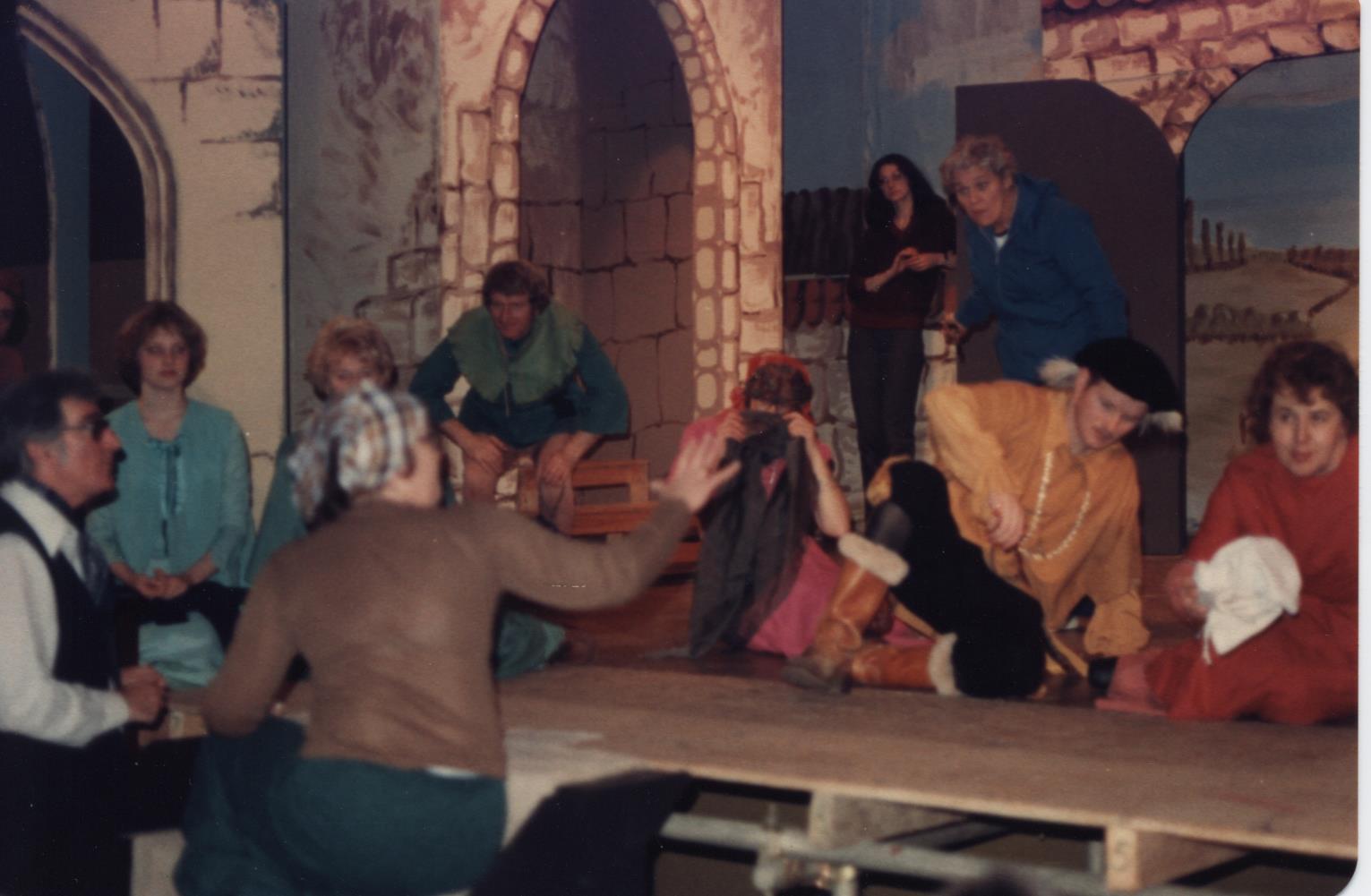


Fortunately, Mum has a few pictures from the production, which, in 1979, stared Allyson White as the green girl, and Stephen Hicks as the green boy. Captions my Mum’s. You can even see my Mum, looking willowy and Pre-Raphaelite in the background of the rehearsal one…
She – and I – wonder what happened to the swan…
Notes:
[i] http://www.imdb.com/name/nm0416877/bio?ref_=nm_ov_bio_sm
[ii] http://www.imdb.com/name/nm0115551/bio?ref_=nm_ov_bio_sm
[iii] Newspaper clipping ‘Musical Shows Off Group’s Talents’ (3 December 1979), private collection
Images:
All images © Cherry Wilkinson
The Green Children of Woolpit (and Bardwell)
The cover image on Suffolk Folk Tales shows two of my favourite tales from the book. One, the story of King Raedwald of East Anglia, has featured already in this blog, but the one that gazes soulfully out of the page at you hasn’t – despite being one of Suffolk’s most famous tales. I’ve been biding my time, waiting for the right moment. And now it’s arrived – The Green Children features in The Anthology of English Folk Tales (The History Press) out on 1 November. I was really keen for this story to feature in the book because not only it is important for Suffolk, but is a nationally important tale, one of the first that shows the place of the fair folk – or the dead? – the Otherworld. Or does it? I’m going to do two blogs about this story – this is the first, looking at the story in Suffolk, and the places and people associated with it. The second blog will look at the theories that have grown up around this little tale – and other medieval mirabilia.
It’s an old tale, one of three in Suffolk Folk Tales recorded by the monk Ralph of Coggeshall in his Chronicon Anglicanum around the turn of the 13th century: the others being the Wildman of Orford and Malekin. Unlike the other two, the Green Children has another source, a slightly earlier source, from the Yorkshire monk William of Newburgh. The stories vary a little, but not in their essentials – the discovery of children with green skin in the small Suffolk village of Woolpit just outside Bury St Edmunds, then a major pilgrimage site for the relics of St Edmund. I decided to mostly follow Ralph’s story, for, although his is a slightly later recording, he knew Suffolk and his feels more realistic, with its names and places specified. Anyone who has anything to do with folklore will know that that is a mocker – specificity does not historical accuracy make – but when you are reaching back into the reign of King Stephen, much is inevitably guesswork.
In Woolpit they are proud of the green children – they feature on the village sign, and in the museum you can buy mugs featuring them!

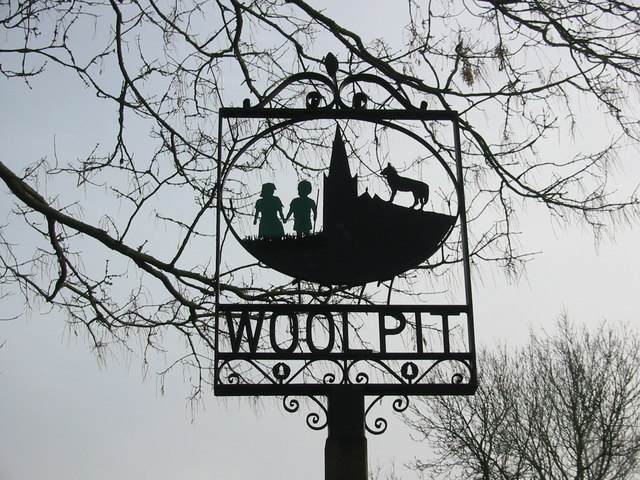
I should note that Woolpit probably doesn’t mean ‘wolf pit’ as William of Newburgh assumes – or, it does, but not in the way he thinks. Woolpit’s an old village. We know of it in the early 11th century when East Anglia was under the rule of Ulfketel Snillingr. Ulfketel is in the background of another of the tales in Suffolk Folk Tales, The Legend of the Holy Wells. Woolpit (Wlfpet) was given by Ulfketel to the abbey at Bury (in thanks?) after the battle of Thetford in 1004. Ulfketel means ‘wolftrap’[i]. Is that the explanation behind the name? Simply named after the lord of the manor?
There probably were pits around the village, though. There were three Romano-British farmsteads nearby – perhaps the pits were in one of those? Or maybe they emerged from the Roman clay pit at nearby Elmswell?[ii] We’ll never know – and more on the theories in the next blog! Ironically, the story of the green children wasn’t the most famous thing about Woolpit during the middle ages. It was the site of a holy well, and a shrine to the Virgin Mary. By the time the green children were found in the late 12th century, pilgrims were probably already making their way to pray at the image of the Virgin in the church. No wonder the villagers moved the green children on so fast!
In Ralph’s version, you see, it isn’t Woolpit where most of the action takes place. According to him, the villagers take the children to the nearby manor of Wikes, to the custody of the Constable of the neighbouring hundred, Blackbourn (Woolpit was in Thedwastre hundred), Richard de Calne. He was a real person, who definitely held a manor at Bardwell. We know his granddaughter Sibilla sold land there. Her name possibly links us back to Ralph – she is ‘de Colonia’, not de Calne. Is this a reference to Colchester (Colonia Victricensis) in Essex, not far from Coggeshall? Well, probably not, but you never know – after all, he had links with the landowners at Dagworth where Malekin is set.
To my mild dismay I discovered there were two manors called Wikes – both of them in the little village of Bardwell. I confess I couldn’t discover which was the correct manor. So, after an unsatisfactory lunch at Wyken Vineyard (sorry – it was really nice, but very small and rather expensive!) I decided to plump for the other one, Wykes. If you look on an OS map today, Wykes manor is not there. However, we had an old map bought by my Grandad in the 1970s, and there it was – low earthworks near the church, clearly marked. All gone, ploughed away in the last 40 years.
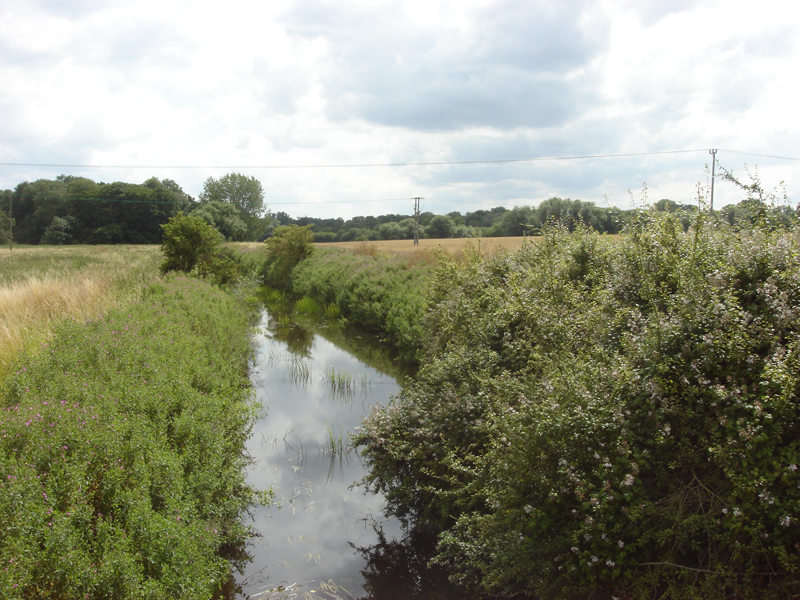
The Black Bourn still trickles past, and it was possible to imagine the scene – but, as you see, there wasn’t a bump in the field to mark the house.
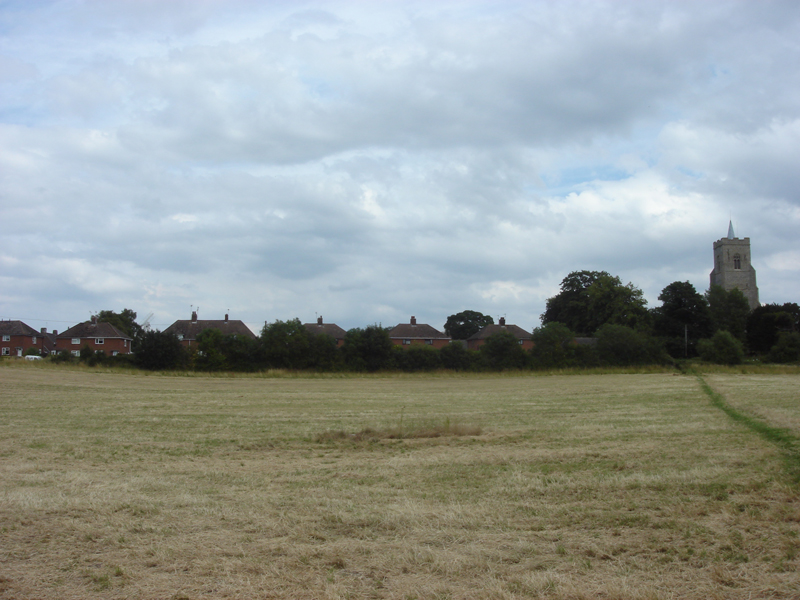
I felt rather sorry for it, so Wykes it was. I felt a bit sorry for Bardwell too, oblivious, it seemed, to its association with Ralph’s famous story, and was keen to bring it back into the tale.
The green girl seems to have been happy at Bardwell – although in the end she did go to yet another country … across the border to Norfolk, to live with her husband in what is now called King’s Lynn!
Notes:
[i] Information taken from http://www.woolpit.org/history/
[ii] The Green Children of Woolpit by Elizabeth Cockayne (n.d.), p. 5
Images:
- Me and the Woolpit mug © Kirsty Hartsiotis
- The ‘green children’ of Woolpit on the village sign © Copyright Rod Bacon and licensed for reuse under this Creative Commons Licence
- The Black Bourn at Bardwell © Kirsty Hartsiotis
- Wykes Manor, Bardwell © Kirsty Hartsiotis

